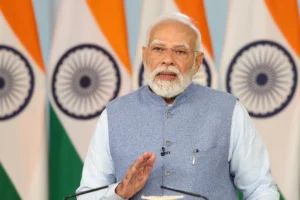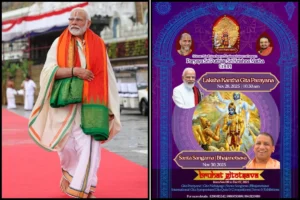
The World Anti-Doping Agency ‘uncovered evidence’ of insufficient drug tests conducted on the nation’s athletes in its harsh report on India’s anti-doping policy, which was issued on Tuesday.
The numbers of the drug tests performed on Indian cricketers in 2021 and 2022, which The Indian Express was able to get under the Right to Information (RTI) Act of 2005, indicate this fact.
In August 2019, cricket came under the purview of the government-run anti-doping body. Government representatives subsequently promised that “all cricketers would be tested by NADA” and that “the BCCI was no different from other” federations, putting an end to years of defiance from the cricket board.
The National Anti-Doping Agency (NADA) reported that a total of 5,961 tests were carried out in 2021 and 2022. Only 114 of those, or a small percentage, were on cricketers. In contrast, athletics saw the most testing of any discipline with 1,717.
Rohit Sharma, the Indian cricket team’s test captain, was the player who underwent the most testing over the course of the two years, receiving 6 visits from dope control officers in Mumbai, Ahmedabad, Chennai, and the UAE. Only one test was given to seven players, including Rishabh Pant, Suryakumar Yadav, and Cheteshwar Pujara.
12 of the 25 male players under contract with the Board of Control for Cricket in India (BCCI) had no tests performed by the NADA. Former India captain Virat Kohli, current limited-overs captain Hardik Pandya, fast bowlers Mohammad Shami, Mohammed Siraj, Umesh Yadav, Shardul Thakur, and Arshdeep Singh, as well as the batsmen Shreyas Iyer and Deepak Hooda, wicket-keeper batsmen Sanju Samson and Srikar Bharat, and all-rounder Washington Sundar are on the list of cricketers who were not tested.
During this time, every member of the women’s national team was put through the process at least once, with Harmanpreet Kaur and Smriti Mandhana being tested a total of three times apiece.
This information does not suggest that the players have committed any wrongdoing. However, it supports the claim made by the global anti-doping organisation that NADA was not taking sufficient steps to apprehend potential offenders.
It also highlights a troubling trend in that some of the nation’s top male cricket players have not been requested to submit samples for testing, despite the NADA constantly monitoring the nation’s Olympic competitors and having recently captured some sizable fish in the dope net.
For instance, India’s anti-doping investigators visited Olympic silver medalist Ravi Dahiya’s home 18 times between January 2021 and December 2022. They arrived unannounced at the wrestler’s training facilities in Sonepat, Haryana, and New Delhi to take samples of his blood and urine, which were subsequently examined for the existence of any illegal substances.
Weightlifter Mirabai Chanu, who also won an Olympic silver medal, received eight unannounced visits from NADA’s dope control inspectors during that time, who took eight samples from her in Patiala, Gandhinagar, and Birmingham. Neeraj Chopra, a javelin thrower who won gold in the Tokyo Olympics, was followed by anti-doping officials to Patiala and as far as Finland and the USA, where he was tested five times.
These tests were performed outside of competition, which is the cornerstone of the anti-doping policy because it allows players to be tested at any moment during a predetermined window of time after sharing their whereabouts with the agency.
India collects less cricket players’ samples outside of competition than other significant cricket-playing countries like England and Australia. WADA figures show that in 2021, the UK agency tested its cricket players 96 times outside of competition while Australia tested its players 69 times. That number was 12 in India.
Cricket players in the past, who were hesitant to disclose their whereabouts due to privacy and security concerns, found this to be one of the aspects that bothered them.
International cricketers have very little downtime in between games due to their heavy workloads, constant travel, and packed schedules. Cricketers today must be fitter than ever before due to three formats, intense international competition, and a longer IPL window. Therefore, it is essential to establish a strong anti-doping system that allows for player testing at any time and anywhere. This is one requirement to provide a fair playing field and a healthy sporting atmosphere.
To read more such news, download Bharat Express news apps



















